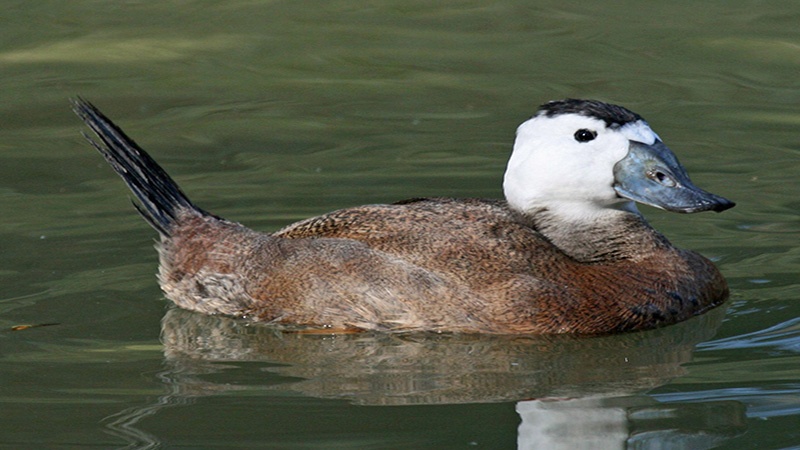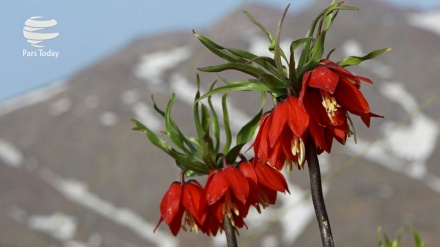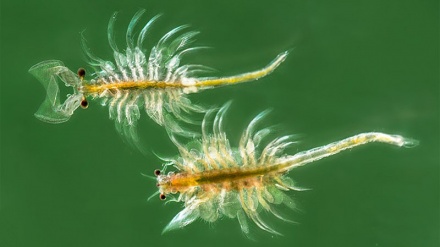Iran’s rare animal and plant species (18)
Welcome to this week’s episode of the series Iran’s Rare Animal Species. Today, we study another rare Iranian animal named the white-headed duck.
According to the latest statistical figures released by the Islamic Republic of Iran Environment Protection Organization, 535 different bird species live in Iran, which constitute one third of the entire bird species, worldwide. Meanwhile, the majority of birds in Iran are migrant birds. Based on the studies carried out in this domain, the majority of the migrant birds are those, who spend autumn and winter seasons in Iran, having migrated from West Siberia and Western Europe. There are also a number of birds who are spotted in Iran all year long; one of which has been registered in the red list of the endangered species of the International Union for Conservation of Nature; namely white-headed duck. Today, we study this rare animal.
White-headed duck is a darkish water bird with a white head, long blue beak, and a vertical black tail, which is easily spotted from other types of duck. The length of white-headed ducks’ body stretches to nearly 46 centimeters. Male and female white-headed ducks are different in appearance. The male bird is brownish in color, with a partly grayish back. Small gray moles are spotted on their backs and sides, which are only distinguishable from a short distance. Their heads and abdomens are whitish, with their foreheads being black. Their tails are also black and are usually held vertically. The female birds maintain a grayish brown color; with pale brown moles, throughout their backs. Their tails are dark brown; which they spread on the water surface. Their chins and throats are whitish, while a white line is observed under their eyes. Their eyes are black and their feet are gray in color.
The beaks of the male white-headed ducks are grayish blue and the beaks of the female white-headed ducks are brown in color.
White-headed ducks usually live in lagoons, costal lines, and wetlands with cane fields; and build their nests next to water, given that these birds usually feed on fish, crustaceans, mollusks, frogs, and other small aquatics. White-headed ducks usually fly close to water surface. The female white-headed duck usually keeps its tail down and on the surface of water.
White-headed ducks only live in Northwest Africa, Middle East, Central Asia, and south and southwest of Europe. They can be spotted within the wetlands, lakes, and cane fields in Russia, Kazakhstan, Uzbekistan, Mongolia, Armenia, Afghanistan, Turkey, Hungary, southern Spain, Algeria, and Tunisia. The lakes and steppes of North Kazakhstan, and Turkey, and parts of Iran are considered as some of the most important habitats of white-headed ducks.
In Iran, white-headed ducks usually live and reproduce in Fars Province, Sistan region, wetlands in northeast Iran, south of Uremia Lake, and a wetland in the region of Mahabad in northwestern Iran. recently, head of the Environment Protection Department of Mahabad has reported on observance of more than a hundred of white-headed ducks in a wildlife safe haven in that region, which is known as one of the most important poles of eco-tourism industry in Iran. This wildlife shelter captures the attention of countless eco-tourists, who travel to this region, all year long.
White-Headed ducks are one of the endangered species in more than 50% of their habitats, worldwide. Experts believe that the population of white-headed ducks has plunged from 150,000 in numbers in early 20th Century, to 15,000 in the current era. The most important factor behind this reduction is a change of the habitats of this bird into farmlands. The white-headed ducks are also threatened by red ducks.
Red ducks originate from North America. Some of them were transferred to England to live in the birds’ orchard. Ten red ducks fled this orchard; with their population sharply rising in a short period of time. Thereafter, the most significant threat to the life of white-headed ducks is posed by their mating with red ducks. The related offspring are capable of reproduction; which may lead to extinction of pure white-headed ducks in a short period of time. In the meantime, a number of costly plans have been arranged to save the generation of white-headed ducks, which have been successful. Fortunately, red ducks are yet to be spotted in Iran.
Currently, white-headed ducks have been enlisted among endangered species by the International Union for Conservation of Nature. White-headed ducks are protected by the Islamic Republic of Iran’s rules and regulations.
MR/SS



